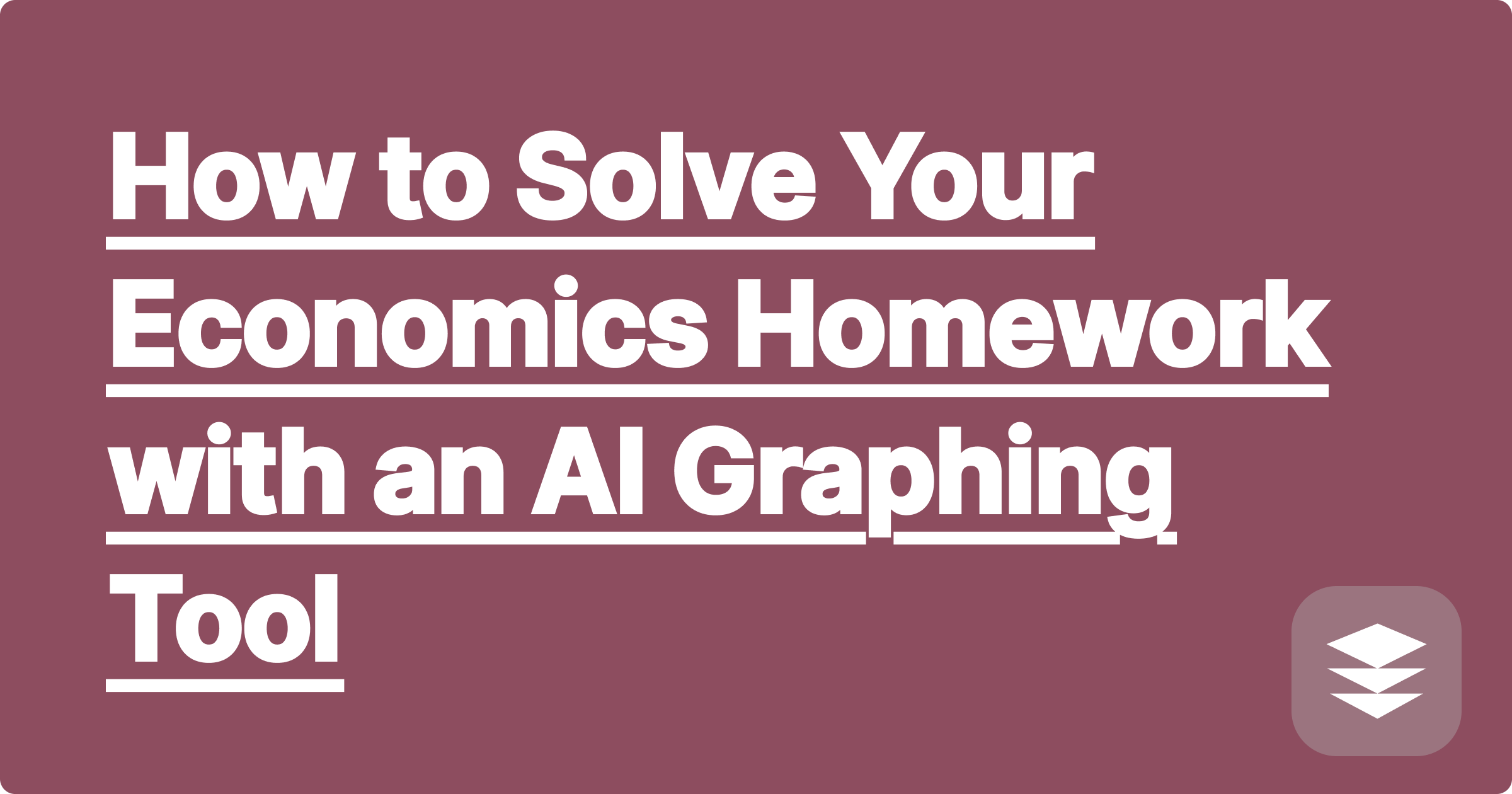
Introductory economics is all about one thing: graphs. The simple, powerful model of supply and demand is the foundation for almost everything you will learn. Understanding how these curves shift and what that means for price, quantity, and market welfare is the key to success in the course. But drawing these graphs accurately by hand, especially when showing shifts and calculating areas, can be tricky. You need a fast, accurate economics graph maker.
The challenge isn't just drawing two crossed lines. Your homework requires you to:
This is where an AI tool like GPAI Solver becomes your personal economics TA. It can understand natural language prompts and turn them into perfectly labeled graphs and precise calculations.
Example Workflow: Analyzing a Tax
[Image: A screenshot of a supply and demand graph generated by GPAI Solver. It clearly shows a leftward shift of the supply curve due to a tax, and the areas for consumer surplus, producer surplus, tax revenue, and deadweight loss are shaded and labeled. Alt-text: An economics graph maker and supply and demand solver showing the effects of a tax.]
The power of this workflow is speed. You can instantly see how changing the size of the tax affects the deadweight loss, or how the elasticity of demand changes the tax incidence. This allows you to run dozens of "what if" scenarios, building a deep, intuitive understanding of the core concepts that a static textbook cannot provide.
As you use the solver to work through problems, use the GPAI Cheatsheet tool to act as your note taker. Create a master cheatsheet that summarizes the key concepts. Prompt it to "Create a table comparing a price ceiling and a price floor," or "List the key determinants of demand elasticity." This creates a perfect study guide for your exams.
A: Yes. It can be used to plot indifference curves and budget constraints, show the Keynesian cross in macroeconomics, or graph the production possibilities frontier. As long as you can describe the model or provide the equations, the AI can help you visualize and solve it.
A: Drawing by hand is a great way to learn initially. However, it's slow and often inaccurate. Using an AI as your economics graph maker is perfect for homework and for creating perfectly accurate graphs for your reports. It ensures your calculations for surplus and deadweight loss are precise.
Economics is a powerful lens for understanding the world, and graphs are its primary language. By using an AI assistant to speak this language fluently, you can move past the mechanics of drawing and calculating and focus on the deeper economic insights.
[Solve your economics homework faster. Try the GPAI Solver to create graphs and analyze markets. Sign up for 100 free credits.]
An AI-Powered Guide to Digital Logic Design and K-Maps
Mastering Your Microelectronics Course with an AI Op-Amp Solver
How to Use AI for Your Chemical Reaction Engineering Calculations
A Smarter Way to Analyze Pedigrees and Genetic Crosses with AI
From Lab Data to Perfect Graphs: Your AI Lab Report Assistant
How to Create the Ultimate MCAT Cheatsheet for Bio & Biochem with AI
Surviving Your FE Exam Prep with an AI-Generated Formula Sheet
How to Solve Your Economics Homework with an AI Graphing Tool
Can AI Help Debug Your Finite Element Analysis (FEA) Model?
The Best Way to Organize and Summarize Your Computer Networking Notes